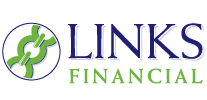For developers or investors interested in buying commercial real estate but who don’t have any upfront capital or who cannot get conventional debt financing, a hard money loan may be the answer. Before using this funding source, you should know the difference between hard money loans (HMLs) and traditional debt financing.
What is a Hard Money Lender?
The terms hard money lender and private lender are often used interchangeably. Although they are both non-institutional funding sources, there is a difference. A hard money lender is an organized entity, usually licensed in some way, that gets its money from private investors. They have set criteria for making loans; you know these standards in advance and can compare them between lenders. Private lenders are just that: private. They can be a friend, business associate or group of individuals. Loan criteria are flexible and up for negotiation.
Hard Money Loan or Debt Financing: Pros and Cons
Loan Amount
Although you sometimes can borrow up to 100 percent of the purchase price, most hard money lenders loan up to 70 percent of the repaired value (the value of the structure in its improved condition) or up to 75 percent of the current property value. Loans are usually short-term, six to 12 months, compared to five years and longer for more traditional debt financing.
Requirements
In contrast to debt financing, HMLs are based on the value of the commercial real estate that you’re buying, not on your credit worthiness. Lenders are, however, concerned with the amount of equity you have invested in the property you’re using as collateral. Whereas banks typically place a lien against the property you are buying as collateral for the loan, HMLs might require you to back up the loan with not only the property being financed but other assets. Banks like to see a solid income history and might reject your application if you don’t have a sufficient history, even though your income may be high. HMLs are more apt to look at your current income and forego the income history.
Interest Rates
Interest rates on HMLs are typically considerably higher than debt financing rates because the lender takes on more risk compared to a conventional loan and because no bank or government backs up the loan. HML interest rates might be as high as 15 percent to 20 percent; points can range between two and 10.
Default
The foreclosure process is less flexible and intolerant of default on HMLs. With debt financing, foreclosure follows that state’s judicial process that specify the timetable. Unlike banks, who will work with you if problems arise because they don’t want to be saddled with a foreclosed property, hard money lenders aren’t opposed to taking possession of the collateral backing the loan, and often include language in their loan documents to make that process quicker if necessary.
Speed
With HMLs, you usually receive the money within seven to 21 days, compared to 45 to 60 days for debt financing. As any buyer knows, speed is a significant advantage and sometimes the key to closing a deal successfully when a seller is evaluating competing bids.
Call Links Financial today if your goal is to purchase, develop and sell commercial property for a profit. Our experienced financial experts can advise you on whether a hard money loan or debt financing is the best fit for your real estate investment strategy.






